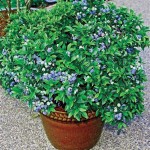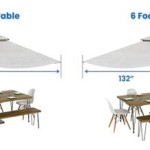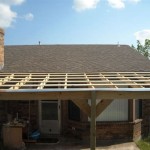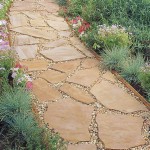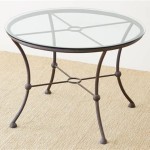Synthetic Pavers: A Durable and Sustainable Option for Patios and Walkways
When planning a patio or walkway, homeowners and landscape architects face numerous choices regarding materials. Natural stone, brick, and concrete pavers have traditionally been popular options. However, synthetic pavers are emerging as a viable and increasingly attractive alternative, offering a combination of durability, sustainability, and aesthetic versatility.
Synthetic pavers are typically manufactured from recycled materials, such as plastic, rubber (often from recycled tires), and other industrial byproducts. By utilizing these materials, synthetic paver production reduces landfill waste and lowers the demand for virgin resources. This makes them an environmentally conscious choice for construction projects. The manufacturing process involves combining these recycled materials with binding agents and colorants, then molding the mixture into paver shapes.
The resulting pavers offer a range of benefits that distinguish them from conventional paving materials. They are known for their durability, resistance to weather and wear, and ease of maintenance. Furthermore, the variety of designs, colors, and textures available allows for a high degree of customization, enabling property owners to achieve their desired aesthetic. This article will explore these advantages and other considerations when choosing synthetic pavers for patio or walkway projects.
Durability and Longevity
One of the most significant advantages of synthetic pavers is their exceptional durability. Unlike natural stone or concrete, which can be susceptible to cracking, chipping, and spalling, synthetic pavers are more resistant to these forms of damage. This is due to the inherent properties of the recycled materials and the manufacturing process. Recycled plastic and rubber, for instance, provide a degree of flexibility that allows the pavers to withstand the stresses of temperature fluctuations and ground movement.
Synthetic pavers are also highly resistant to water absorption. Concrete pavers, in contrast, are porous and can absorb water, which can freeze and expand during cold weather, leading to cracks. The non-porous nature of synthetic pavers prevents this freeze-thaw damage, extending their lifespan significantly. This makes them particularly well-suited for climates with harsh winters.
Furthermore, synthetic pavers are often treated with UV inhibitors, which protect them from the harmful effects of sunlight. Prolonged exposure to UV radiation can cause fading and degradation in some materials, but these inhibitors help to maintain the color and integrity of the pavers over time. This is particularly important for outdoor applications where the pavers are constantly exposed to the sun.
The combination of these factors – resistance to cracking, water absorption, and UV degradation – contributes to the long-term durability of synthetic pavers. While the initial cost may be comparable to other paving materials, the reduced need for repairs and replacements over time can make them a more cost-effective option in the long run. Homeowners can expect a lifespan that is comparable to, and in some cases exceeds, that of traditional pavers.
Specific examples of durability can be seen in applications where heavy use is expected. Driveways paved with synthetic pavers designed for vehicular traffic can withstand the weight of cars and trucks without cracking or deformation. Walkways and patios in high-traffic areas will also maintain their appearance and structural integrity for many years with proper installation and maintenance.
Sustainability and Environmental Impact
The use of recycled materials is a core characteristic of synthetic pavers, making them a more sustainable choice compared to traditional options. By diverting plastic, rubber, and other waste products from landfills, synthetic paver manufacturing contributes to waste reduction and conservation of natural resources.
The production of concrete, for instance, is a resource-intensive process that involves quarrying raw materials and burning fossil fuels for cement production. Synthetic paver production, on the other hand, requires significantly less energy because it primarily utilizes recycled materials that have already been processed. This reduces the carbon footprint associated with the manufacturing process.
In addition to using recycled materials, some manufacturers of synthetic pavers are also implementing sustainable practices in their production facilities. These practices may include using renewable energy sources, reducing water consumption, and minimizing waste generation. These initiatives further enhance the environmental benefits of synthetic pavers.
The impact of choosing synthetic pavers extends beyond the manufacturing process. Because they are more durable and require less maintenance than traditional pavers, they also contribute to sustainability over the long term. Fewer repairs and replacements mean less material waste and reduced energy consumption associated with maintenance activities.
Furthermore, certain types of synthetic pavers can be designed to improve stormwater management. Permeable pavers, for example, allow rainwater to infiltrate the ground, reducing runoff and replenishing groundwater supplies. This can help to mitigate the environmental impacts of urbanization, such as increased flooding and water pollution. By choosing permeable synthetic pavers, property owners can contribute to a more sustainable and resilient landscape.
The environmental benefits of synthetic pavers make them an increasingly attractive option for projects seeking LEED (Leadership in Energy and Environmental Design) certification or other green building standards. Their use can contribute to points in categories such as materials and resources, water efficiency, and innovation in design. Choosing synthetic pavers is a tangible way to reduce the environmental footprint of a construction project and promote sustainable development.
Design Versatility and Aesthetic Options
Synthetic pavers offer a wide range of design possibilities, allowing homeowners and landscape architects to create unique and aesthetically pleasing outdoor spaces. They are available in a variety of shapes, sizes, colors, and textures, mimicking the look of natural stone, brick, or other materials.
The manufacturing process allows for precise control over the color and texture of the pavers, enabling manufacturers to create custom designs that meet specific project requirements. This level of customization is often not possible with natural stone or other traditional paving materials. For example, synthetic pavers can be produced in a wide range of colors to complement the existing architecture and landscaping. They can also be textured to simulate the look of natural stone, brick, or even wood.
The variety of shapes and sizes available allows for creative and intricate paving patterns. Homeowners can choose from traditional rectangular pavers, as well as more unique shapes such as circles, triangles, and hexagons. These shapes can be combined in various ways to create visually interesting patterns that enhance the overall aesthetic of the patio or walkway.
Synthetic pavers are also lightweight compared to concrete or natural stone, making them easier to handle and install. This can reduce labor costs and shorten the construction timeline. The consistent shape and size of the pavers also contribute to a more uniform and professional-looking finished product.
In addition to their aesthetic versatility, synthetic pavers can also be adapted to different functional requirements. As mentioned earlier, permeable pavers can be used to improve stormwater management. Other types of synthetic pavers can be designed with slip-resistant surfaces, making them safer for walkways and pool decks. The design flexibility of synthetic pavers allows them to be tailored to specific project needs and preferences.
The available design options empower property owners to express their personal style and create outdoor spaces that reflect their unique aesthetic. Whether the goal is to create a rustic, natural-looking patio or a sleek, modern walkway, synthetic pavers offer the versatility and flexibility to achieve the desired result.
Before selecting synthetic pavers, it is crucial to consider factors such as the intended use of the patio or walkway, the local climate, and the overall design aesthetic. Consulting with a landscape architect or experienced paver installer can help to ensure that the chosen pavers are appropriate for the specific project and that they are installed correctly. With careful planning and attention to detail, synthetic pavers can provide a durable, sustainable, and aesthetically pleasing solution for outdoor paving needs.

Outdoor Rubber Pavers 9 Pack Material Warehouse

Rubber Patio Pavers Is It A Good Idea Js Brick

How Much Are Outdoor Pavers Rubber Home Patio Or Deck Tiles

Rubber Patio Pavers Is It A Good Idea Js Brick

Rubber Pavers Gray 16 In By Rubberific Material Warehouse

Flagstone Rubber Pavers Durable Outdoor Floor Surface

Can Rubber Pavers Be Used On Grass Or Dirt Material Warehouse

Ohio Home Using Our Rubber Tiles We Have Mulch For Every Dog Bone Pavers Patio Paver Outdoor Designs

Paver Stone Walkway Patio Synthetic Turf For Roseville Home Sacramento

Rubberform Rubber Rooftop Pavers


